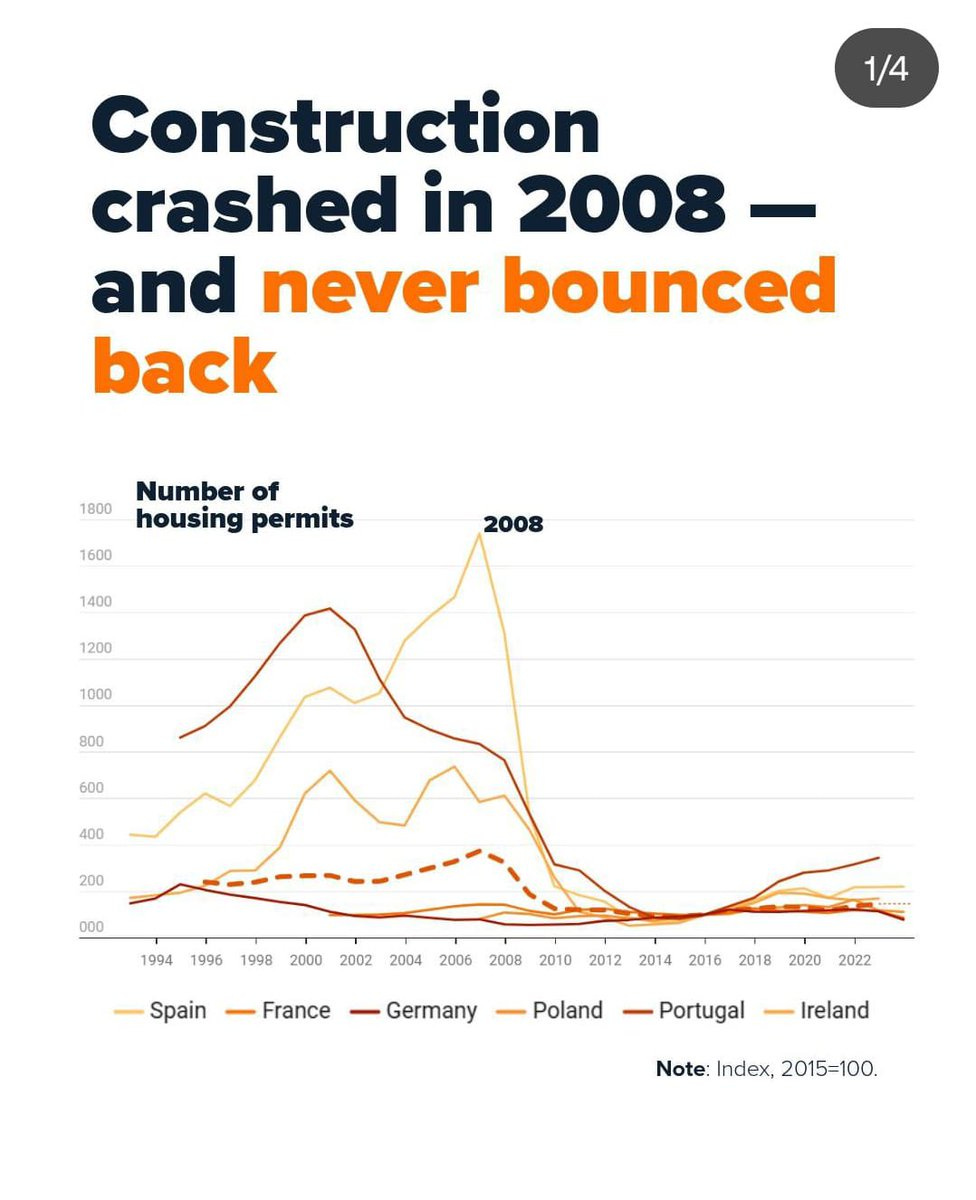Interessant3 #146 | 🏘️Spanish Land, 🌪️Geoengineering, 📈Housing Supply
Three Interesting Things for W/C 2025-06-22
1. Fergus McCullough – How Spain Builds Beautiful New Neighbourhoods
🧱 Spain’s cities thrive thanks to land readjustment, a legal mechanism that reorganises fragmented land plots for coherent urban development.
🗺️ Landowners contribute their irregular plots, surrender a portion for infrastructure, and receive back better-located parcels in a newly planned layout.
🤝 Initially slow and fraught, the process gained traction when Valencia introduced compulsory readjustment in 1994, backing up planning agents with legal teeth.
⏱️ Reforms slashed plan approval times from years to months and quintupled annual development sites within three years.
🏞️ The result: high-impact projects like Zorrotzaurre in Bilbao and Camino Hondo del Grao, where messy land was turned into liveable city space.
🔗 How Spain Builds Beautiful New Neighbourhoods – Progress Ireland (via
)
2. Nick van Osdol – Stormfury: Geoengineering’s Past and Future
🌪️ Project Stormfury (1962–1983) tried to weaken hurricanes with cloud seeding, it was ambitious, dangerous, and ultimately inconclusive.
🧪 Today, geoengineering spans many methods: from stratospheric aerosols and direct air capture to methane oxidation and marine cloud brightening.
💡 Many could slow warming quickly, especially solar radiation management techniques, though most remain early-stage and ethically thorny.

Image of an algal bloom near the U.K. taken from space (Research Gate) 🌍 Humanity already geoengineers (via emissions and land use); the question is whether we now do it intentionally and reversibly.
⚠️ The core argument: we need to research and prepare now, even if we never deploy these tools at scale.
🔗 Stormfury: Paint the Roofs White (A Geoengineering Taxonomy) – Keep Cool
3. Alexei Alexandrov & Laurie Goodman – Place the Blame Where It Belongs
I’ve been reading up on housing policy and social attitudes lately, and I’m increasingly convinced it’s the single most important issue facing western democracies at present. This paper addresses common misconceptions.
💳 Scapegoat 1: Targeted federal mortgage-access programmes inflate house prices and rents.
🔍 Reality: Such initiatives mostly convert renters into owners rather than creating extra households, so overall demand is unchanged and price pressure reflects inadequate supply, not credit tweaks.
💎 Scapegoat 2: Developers who focus on high-end projects drive the affordability crisis.
🏗️ Reality: Every additional dwelling enlarges the housing stock; even luxury units free up cheaper homes through filtering, so more construction, especially mid-priced, tempers price growth.
🏠 Scapegoat 3: Institutional investors buying single-family homes force prices and rents upward.
📈 Reality: Investors follow, rather than create, excess demand; rising costs stem from tight supply plus household formation, not fund ownership.
🛑 Scapegoat 4: Political resistance to relaxing zoning rules is the sole culprit behind high housing costs.
🛠️ Reality: Restrictive zoning does constrain construction, yet a national supply strategy is essential for cost-effective, large-scale building.
🔗 Place the Blame Where It Belongs – Urban Institute
Join us next week for three more intriguing topics that challenge the norm and expand your horizons! ✌️
🌟 Sponsored by PopaDex
Discover a smarter way to securely manage your finances with PopaDex. Our platform automatically consolidates all your financial data into an intuitive interface, giving you a clear view of your net worth and empowering smarter budgeting and investment decisions. With advanced encryption and anonymisation, we prioritise your data privacy, ensuring secure storage and transmission.
Explore more at popadex.com.








